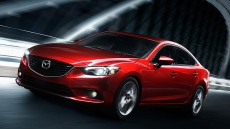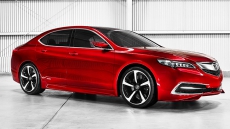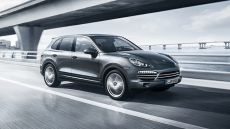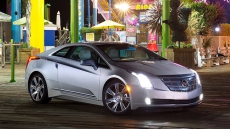If you don’t know what the BMW i3 looks like yet — the German manufacturer’s first fully electric vehicle (EV) offering— you will recognize it the moment you see it.
Not only does the hatchback look like it came from the future, it represents quite a change in design and manufacturing philosophy for the luxury brand.
“BMW i is this nice little incubator within the company that allows us to experiment a little bit, get some learnings and then bring it into the rest of the business,” says Marc Belcourt, national manager for the i program during a media presentation at BMW Canada headquarters.
Rather than simply creating an electric version of an existing model like the 3 Series, the entire concept was built from the ground up. Many of the construction materials used are exclusive to the i3, and as such the car is assembled separate from the rest of the line up.
“When it came to this car, we didn’t just tap into the existing production line in Leipzig (Germany). We built an entire new production facility, which is powered by wind turbines and you can see these massive turbines right outside the plant generating renewable energy to making the i3 and the i8.”
Some of those unique materials include carbon fibre reinforced plastic (CFRP) panels stretched over an aluminum skeleton. The body is smoothened and sprayed in a two-tone theme, with certain sections like the hood, roof, liftgate and trim treated to a black finish regardless of the paint colour chosen. Adding to the interesting look are irregularly shaped rear windows that dip down into the hidden and handle-less suicide rear doors.
Inside, things appear equally forward thinking with a dash covered not in hand-stitched leather but European-sourced eucalyptus wood. Gone is the traditional instrument panel and entertainment display, replaced by a pair of freestanding screens that show and control all pertinent system functions. If the door panels and cloth seats remind you of PET water bottles, that’s because a quarter of the interior is made from recycled sources.
With all these earth-friendly statistics, you might think the i3 drives like a motorized bicycle. Fortunately, even though the aesthetics may not be typical BMW, it still feels like one. Don’t expect M3 performance — a 130-kilowatt electric motor produces a healthy 170 horsepower and 184 lb-ft of torque, good for a 0-100 km/h time of 7.2 seconds. Handling is crisp thanks to a sub 2,000-kilogram curb weight attributed to the lightweight aluminum chassis and CFRP skin. One minor annoyance is the brake-energy-recoup mode that activates every time you take your foot off the accelerator. The car jerks gently as it automatically slows down; although the effects are speed sensitive so it’s less noticeable on the highway.
At the core of the i3 is an 18.8-kilowatt-hour lithium-ion battery providing a range of approximately 160 kilometres on a full charge, which the company says is enough for its target urbanite demographic traveling less than an average 60 km a day. For those suffering from so-called “range anxiety,” BMW offers an optional $4,000 Range Extender (REX) model, available only from the factory with no ability to be retrofitted, increasing the total drivable distance to approximately 300 km.
One of the most attractive aspects of the i3 is the accessible price point. A base MSRP of $44,950 (lower with province-specific government incentives) means this alternatively powered hatchback from a luxury manufacturer is a heck of a lot cheaper than a Tesla or even a Cadillac ELR, though it still can’t touch either in terms of range, with or without the extender. While this may not be the vehicle to usher in the mainstream adoption of green motoring, it’s definitely a step in the right direction.




